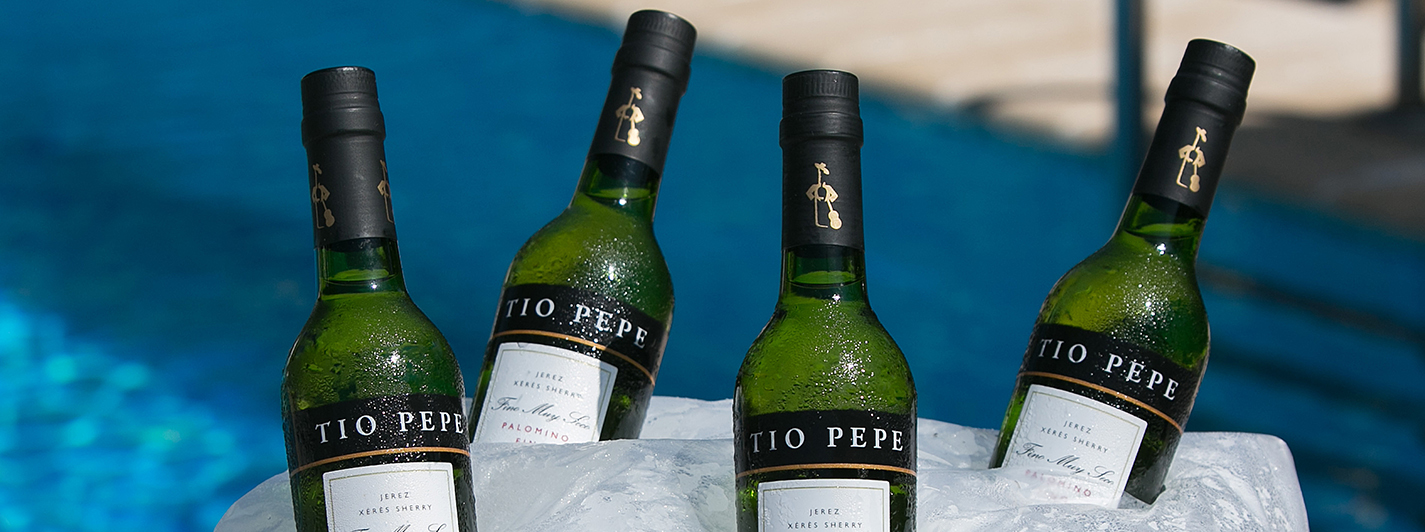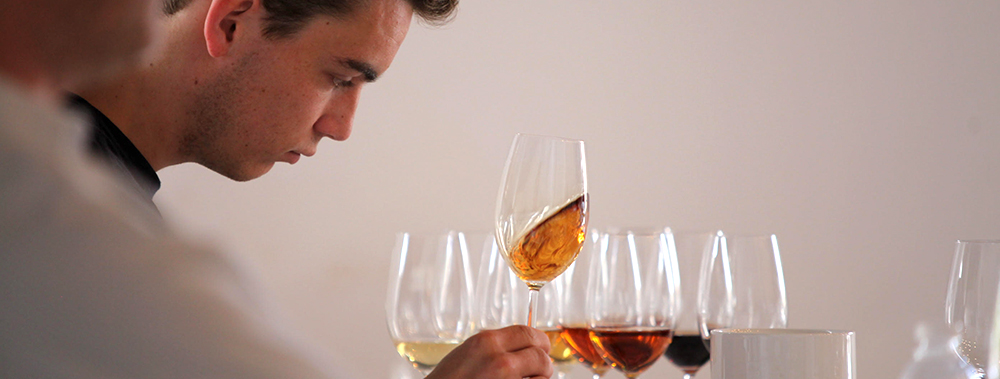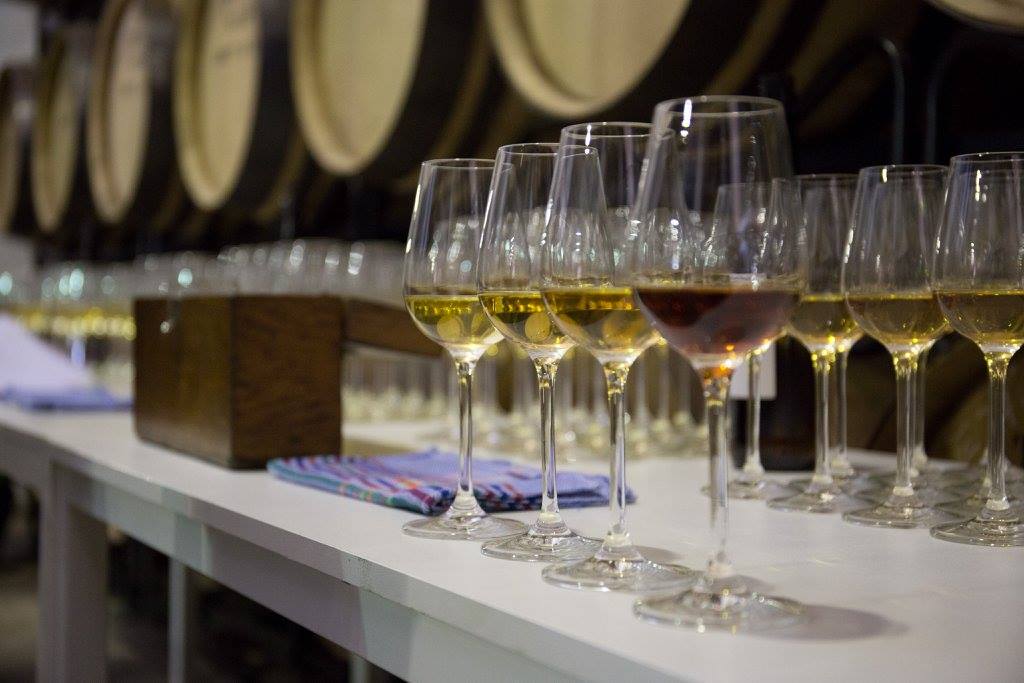Elaboración y Crianza del Amontillado
En el caso de los amontillados de González Byass, este singular tránsito de la crianza biológica a la oxidativa, se produce de manera sutil y pausada, es el tiempo el que se encarga de esta transformación.
El Fino Tío Pepe tras su crianza de cuatro años en bota de roble bajo la interactuación de las levaduras que componen el velo de flor, continua su añejamiento en la solera intermedia de Viña AB y es ahí donde tras el paso de los años el velo de flor comienza a debilitarse, su actividad vital se atenúa y en la superficie comienzan a aparecer unos claros que dejan paso al oxigeno que trasformará al vino con su noble oxidación. Esta transformación es lenta, sutil y progresiva hasta alcanzar la redondez y la perfecta armonía en los 12 años de crianza.
Notas de Cata del Amontillado
El amontillado fino, presenta un color precioso, oro viejo con ciertas notas cobrizas. De rica complejidad en nariz, destacan sutiles notas a madera, frutos secos de cascara con ciertos toques tostados. Además, tabaco, especies y un sinfín de aromas nobles.
Recuerdos salinos en boca con un pos gusto prolongado de intensa sapidez. Equilibrio perfecto entre la vida y la muerte.

If someone asks, "what is an Amontillado"?
Amontillado is a wine with a distinctly Jerezano character even though the name originates from the nearby town of Montilla Moriles, to whose wines it is similar. In the glass, it typically displays a perfect balance between biological and oxidative ageing.
Making and ageing Amontillado
As far as González Byass amontillados are concerned, the curious transition from biological to oxidative ageing happens slowly and subtly, time being the driver of the change. After four years ageing in oak butts and interaction with the yeasts that make up the layer of flor, Tío Pepe Fino continues its ageing process in the intermediate Viña AB solera. There, the layer of flor begins to weaken after a few years, its effect wanes and gaps begin to appear on its surface that allow oxygen through that will eventually transform the wine. This transformation happens slowly, subtly and gradually until, after 12 years ageing, the wine becomes perfectly rounded and harmonious.
Tasting notes for Amontillado
Fino amontillado is a beautiful colour: old gold with hints of copper. Rich and complex on the nose, it displays prominent notes of wood and nuts with touches of toast, along with tobacco, spices and an infinite number of subtle aromas. The wine is salty on the palate, with a very long, flavoursome aftertaste. According to Antonio Flores, this wine represents the beautiful balance between life and death (of the yeast). Antonio Flores holds a cup of amontillado
How and when do you drink Amontillado? There is a broad spectrum of amontillados, from the finos amontillados and amontillados finos, to old amontillados and very old amontillados – a wealth of flavours in the glass that can marry exceptionally well with all sorts of food: grilled seasonal vegetables, bowl food and hearty soups; seafood, rockfish and intensely flavoured wild tuna and also cheese, cold meats or, simply, a beautiful evening. Because fortified wines tend to come to room temperature very quickly, we like to chill them, although that is a matter of taste…now, take you finest crystal glass and enjoy an amontillado served at 8o or 9oC. González Byass’ amontillado par excellence is Viña AB, which has aged for at least 12 years. [embed]https://youtu.be/3Z8Ad51MX5c








